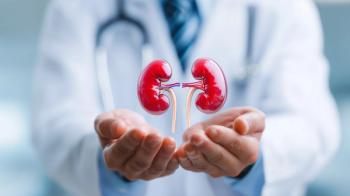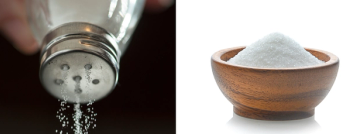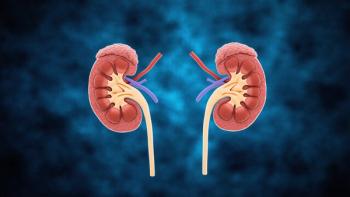
More CONFIDENCE in Slowing CKD with Finerenone Plus Empagliflozin
Early combination therapy could translate into fewer downstream hospitalizations and lower costs associated with dialysis and cardiovascular complications.
Combination therapy of
UACR is a critical biomarker for assessing kidney function and detecting chronic kidney disease, especially in its early stages. Elevated UACR is often the first sign of kidney damage, even when estimated glomerular filtration rate (eGFR) is still normal. Detection of albuminuria is a hallmark of glomerular injury and endothelial dysfunction. Unlike eGFR, UACR is not influenced by muscle mass, making it especially useful in older adults or those with low muscle bulk.
Finerenone is sold under the brand name Kerendia, and empagliflozin under the brand name Jardiance. Finerenone is a nonsteroidal mineralocorticosteroid receptor antagonist and empagliflozin is a sodium-glucose cotransporter-2 (SGLT) inhibitor
Among patients with CKD and Type 2 diabetes, current guidelines recommend renin–angiotensin system (RAS) blockade, SGLT2 inhibitors, glucagon-like peptide-1 receptor agonists and nonsteroidal mineralocorticoid receptor antagonists to slow disease progression and reduce the risk of cardiovascular complications. However, evidence on the benefits and safety of initiating an SGLT2 inhibitor and finerenone simultaneously has been lacking.
Patients with CKD and Type 2 diabetes face heightened risks of end-stage kidney disease, cardiovascular events, and mortality. Prior post hoc analyses hinted at additive albuminuria reductions when nonsteroidal mineralocorticoid receptor antagonists and SGLT2 inhibitors were used together, but these studies could not confirm causality or assess safety. The CONFIDENCE trial was a randomized, double-blind, active-controlled trial to test whether the simultaneous initiation of finerenone and empagliflozin would yield greater reductions in UACR than either drug alone, without compromising safety.
Agarwal and his colleagues enrolled a total of about 800 adults with Type 2 diabetes with an A1C of less than 11%, an eGFR of 30–90 mL/min/1.73 m², and moderate to severe albuminuria (UACR 100–5000 mg/g), all on stable RAS inhibition. Participants were randomized 1:1:1 to finerenone alone (10 or 20 milligrams [mg] daily), empagliflozin alone (10 mg daily), or the combination, with treatment lasting 180 days and a 30-day posttreatment follow-up. The primary end point was the relative change in log-transformed UACR from baseline to day 180. Safety assessments included serum potassium, eGFR changes, symptomatic hypotension, ketoacidosis and adverse events.
At baseline, median UACR was approximately 580 mg/g across groups, and mean eGFR was 54 mL/min/1.73 m². By day 180, combination therapy reduced UACR by 52%, compared with 32% with finerenone alone and 29% with empagliflozin alone. The onset of therapeutic effect was noticeable after day 14, as the UACR was reduced by more than 30% from baseline in the combination group. By day 90, there was a measured 40% reduction from baseline. Most of the albuminuria decline occurred within 30 days. Safety signals were reassuring, as early eGFR dips were reversible, and rates of hyperkalemia, acute kidney injury, and hypotension were low and similar to monotherapy groups.
Rapid and greater albuminuria reduction is strongly linked to slower CKD progression and fewer cardiovascular events. By demonstrating that canagliflozin and empagliflozin can be started together safely and achieve nearly full additive benefits, CONFIDENCE challenges the stepwise treatment paradigm that delays comprehensive risk reduction and time to effective treatment. The evidence from the trial adds support for combination initiation to maximize kidney protection from the outset, especially in patients with high albuminuria who stand to gain the most.
Although current guidelines suggest serial UCAR measurements to guide treatments, the follow-through in clinical practice is too infrequent, according to Agarwal and his co-authors. Early combination therapy could translate into fewer downstream hospitalizations and lower costs associated with dialysis and cardiovascular complications. Payers should recognize the long-term value of simultaneous SGLT2 inhibitor and finerenone coverage, rather than requiring sequential trials of monotherapy. By integrating the findings from the CONFIDENCE trial into guidelines for CKD management and care pathways, payers can reduce clinical inertia and align reimbursement with evidence-based CKD risk management.
Newsletter
Get the latest industry news, event updates, and more from Managed healthcare Executive.






















































